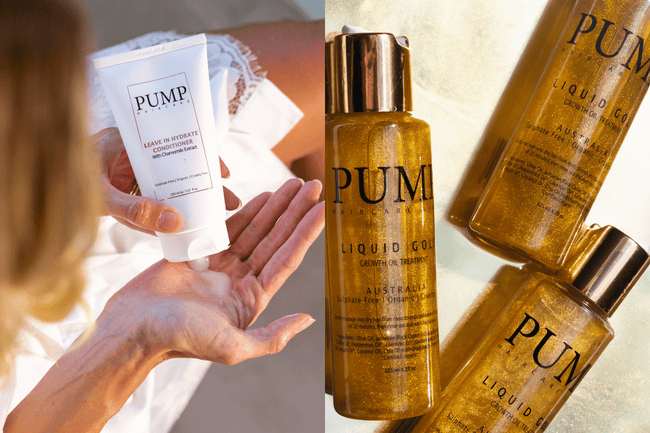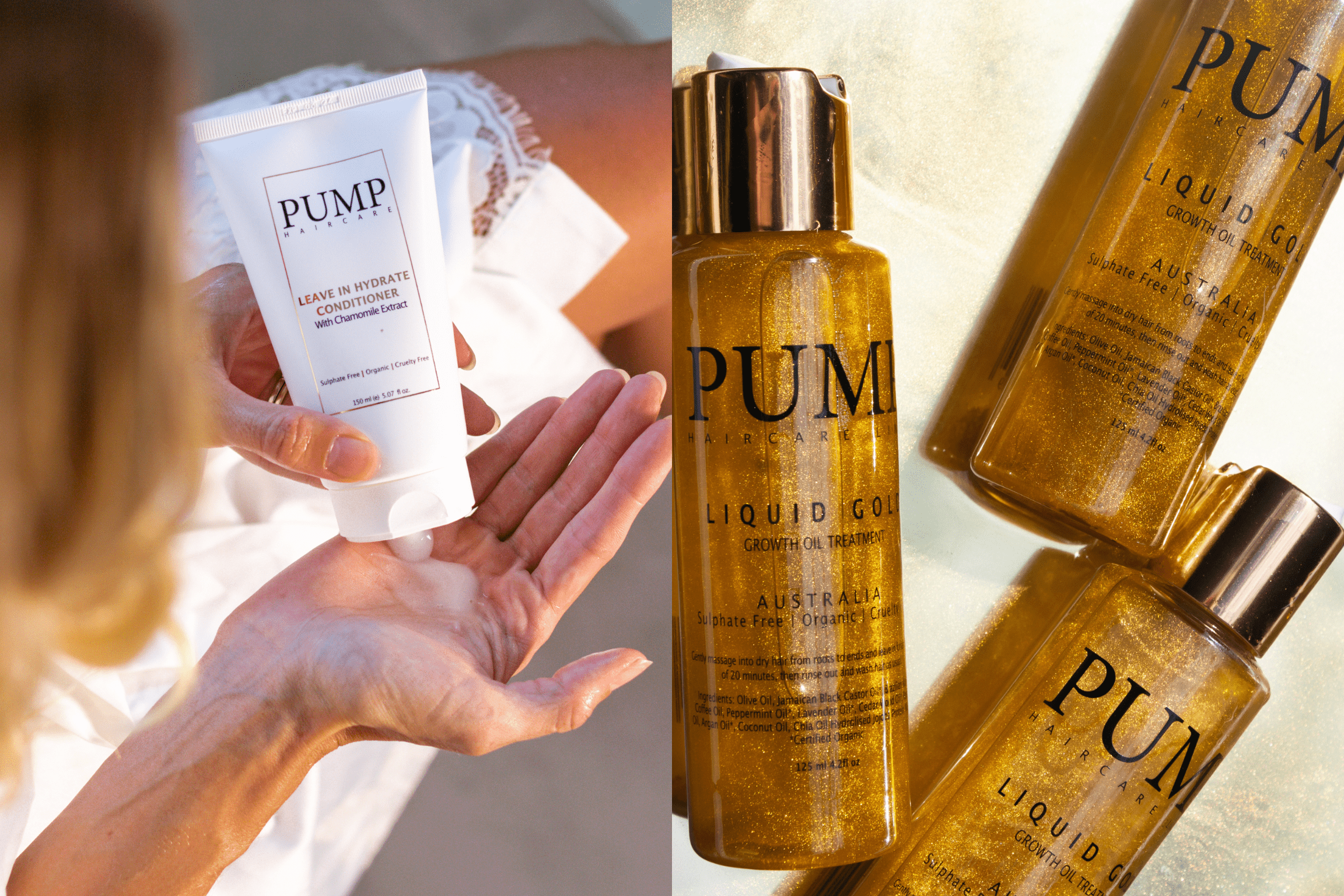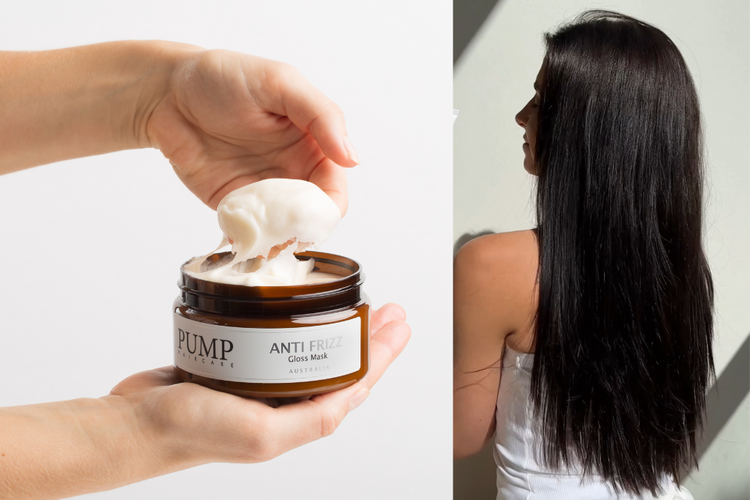Creating a hair care routine is a key aspect of promoting the growth and overall health of your hair. Within these practices, the use of hair oils and leave-in conditioners is a common practice, as these regimens deeply nourish and moisturise the hair follicles and scalp. However, it is important to understand how these treatments vary and what benefits they provide to different hair types. That is why we have broken down the benefits, similarities and differences of each treatment so you can determine which hair care method is best suited for your hair needs.
What Is Hair Oil?
Hair oil treatments are oils that are specifically made to bring moisture back into your hair. Several different natural oils support hair growth, such as argan oil, coconut oil or jojoba oil. Here are the benefits of using a hair oil:
Benefits of Hair Oil
Deep Hydration:
Hair oils offer deep hydration and moisture as they can penetrate and bind to the hair shaft to create a barrier, supporting the structure of your hair follicles. If you are prone to dry hair, using hair oil is a perfect solution.
Nutrient Delivery:
Depending on the type of hair oil you use, each natural oil contains different supportive fatty acids, vitamins and minerals to support hair growth, leaving your hair shiny and healthy.
Frizz Control:
If you are suffering from frizzy hair, hair oils can help to tame any flyaways, making it easier to maintain and style throughout the day.
Scalp Health:
A happy scalp equals happy hair and hair oils can keep your scalp from drying out.
What Is a Leave-in Conditioner?
A leave-in conditioner is a lightweight product that you can leave on after washing your hair or as a top-up moisturising treatment in between washes to treat dry hair. Unlike hair masks or typical conditioners, you can leave this product in as it will help retain moisture throughout the day. Here are the benefits of using a leave-in conditioner:
Benefits of Leave-in Conditioner:
Instant Moisture
Unlike traditional conditioners, you do not have to wet your hair before applying a leave-in conditioner, giving your hair that extra moisturising boost it needs instantly.
Detangling
If you suffer from dry or frizzy hair, using a leave-in conditioner in conjunction with brushing can help you detangle it without causing any breakage.
Frizz Control
They can also be used to tame any flyaways as leave-in conditioners help to smooth over and seal the hair follicles.
Styling Aid: Using a leave-in conditioner can help give your hair a better hold when styling it, this is particularly useful if you have curly hair to better define and hold your curls. In this case, it is best to use leave-in conditioning treatments designed for curly hair such as Pump’s curly girl 2 in 1 cream.
Similarities between Hair Oil and Leave-in Conditioner
Hair oil and leave-in conditioner have some commonalities in their benefits for hair treatments, such as:
Hydration
Both hair care products offer valuable benefits by replenishing hydration and moisture back into the hair follicle, giving it the extra boost it needs.
Frizz Control
Hair oils and leave-in conditioners can help tame any frizz and flyaways, making your hair more manageable and less puffy.
Protection
Both products can offer heat protection against UV damage and heat styling tools, helping to reduce the risk of drying your hair out.
Differences between Hair Oil and Leave-in Conditioner
Although each treatment has similarities, they are also vastly different in their benefits and what type of hair you have determines which product you use. This is how hair oil and leave-in conditioner differ:
|
Hair Oil |
Leave-In Conditioner |
|
|
Texture |
Thicker consistency |
Lightweight texture |
|
Duration |
Hair oils, depending on the amount you use, typically require rinsing. This is because if left on too long can cause your hair to feel weighed down or look greasy. |
Leave-in conditioners are designed to be left in without washing out. |
|
Nutrient Content |
Hair oils are made up primarily of natural ingredients, making their nutrient content higher than leave-in conditioners. |
Leave-in conditioners contain fewer nutrients as they are generally mixed with more ingredients than natural hair oils. |
|
Scalp Benefits |
Hair oil offers a nourishing treatment for your scalp. |
Leave-in conditioners should be applied to the ends of your hair rather than your scalp. Letting it sit on your scalp could lead to product buildup.
|
Should You Choose Hair Oil or Leave-in Conditioner
Deciding on what treatment is best for you is dependent on your hair type and what your hair goals are, here are some considerations to help you decide on which treatment is best:
Choose Hair Oil
If you suffer from a dry or itchy scalp, hair oil can be used to gently stimulate and nourish your scalp. It is also a good option to use if you want to do an overnight treatment for dry or damaged hair as it can offer your hair deep hydration.
Choose Leave-in Conditioner
If you are worried about detangling your hair, are looking to manage frizz and want a daily moisturising solution that is lightweight, it is best to choose a leave-in conditioner. If you have curly to wavy hair, leave-in conditioners also act as a great styling aid to keep your curls intact throughout the day.
Can You Use Hair Oil and Hair Conditioner Together?
Yes you can, here is a breakdown of the benefits of using hair oil and leave-in conditioners together and how to go about it:

Benefits of using hair oil and leave-in conditioners together
When combing hair oil and leave-in conditioners into your hair care routine, you can expect a double dose of moisture to your hair. This is particularly beneficial if you are suffering from dry or damaged hair. This combination will also support you in detangling and controlling your frizz as leave-in conditioners work to detangle while hair oils smooth over the hair follicles. It is important that you do not overuse the two and give your hair rests in between treatments as too much of either product could cause your hair to be weighed down and look greasy. Trial and error is always the best approach when incorporating both hair oils and leave-in conditioners into your hair care routine.
How to use hair oil and leave-in conditioner together?
Here is a step-by-step guide on how to use hair oil and leave-in conditioner together.
Pre-shampoo Treatment
Beginning with dry hair, apply a hair oil of your choice, starting at the base of your hair and working your way up to the roots. Wait 30 minutes or leave it on overnight for a deep conditioning treatment. We recommend Pump’s liquid gold growth oil as a pre-wash treatment.
Rinse and Shampoo
After your desired treatment duration, rinse the hair oil out using lukewarm water before using a sulphate-free shampoo to remove the leftover oil.
Apply Conditioner
Apply a nourishing conditioner after shampooing, focusing on the ends of your hair and working your way up to the scalp. Rinse thoroughly with lukewarm water.
Style as Desired
Now that you have applied the leave-in conditioner, you can follow your styling routine, be it air drying or heat styling for desired results. By using oil and leave-in conditioner together your hair will be nourished and moisturised throughout the day, making your hair more manageable and healthier.
FAQs about hair oil and leave-in conditioner
How often should you use hair oil or leave-in conditioner in your hair?
How often you use hair oil or leave-in conditioner is dependent on your hair type and hair needs. For example, if your hair is very dry or frizzy, your hair would benefit from applying oil 1-2 times a week and using a leave-in conditioner in between washes. If your hair is relatively hydrated and healthy, doing an oil treatment every 2-4 weeks for an extra nutrient boost should be sufficient. Lastly, if your hair is prone to being oily, using a hair oil or leave-in conditioner may be unnecessary and should be done infrequently. As a rule of thumb, see how your hair reacts to the new treatment and adjust the frequency as needed.
When should you not oil your hair?
You should avoid using oil if your hair hasn't been washed or you have a scalp infection. This is because oil can trap dirt, causing the overgrowth of bacteria or scalp infections to worsen. You should also avoid putting oil on your hair before having a chemical treatment as it can affect the results.
Should I oil my hair in the morning or night?
Applying oil in the morning or night depends on the desired effect and your preference for treatment. If you apply oil to your hair in the morning, it can act as a heat protection against UV rays throughout the day. However, depending on how much you apply, you may need to wash your hair before leaving the house. Alternatively, applying oil to your hair at night allows the product to deeply nourish and moisturise your hair as a leave-in treatment. If you choose to use oil at night, be sure to wear a hair wrap to protect your pillow from oil stains.






